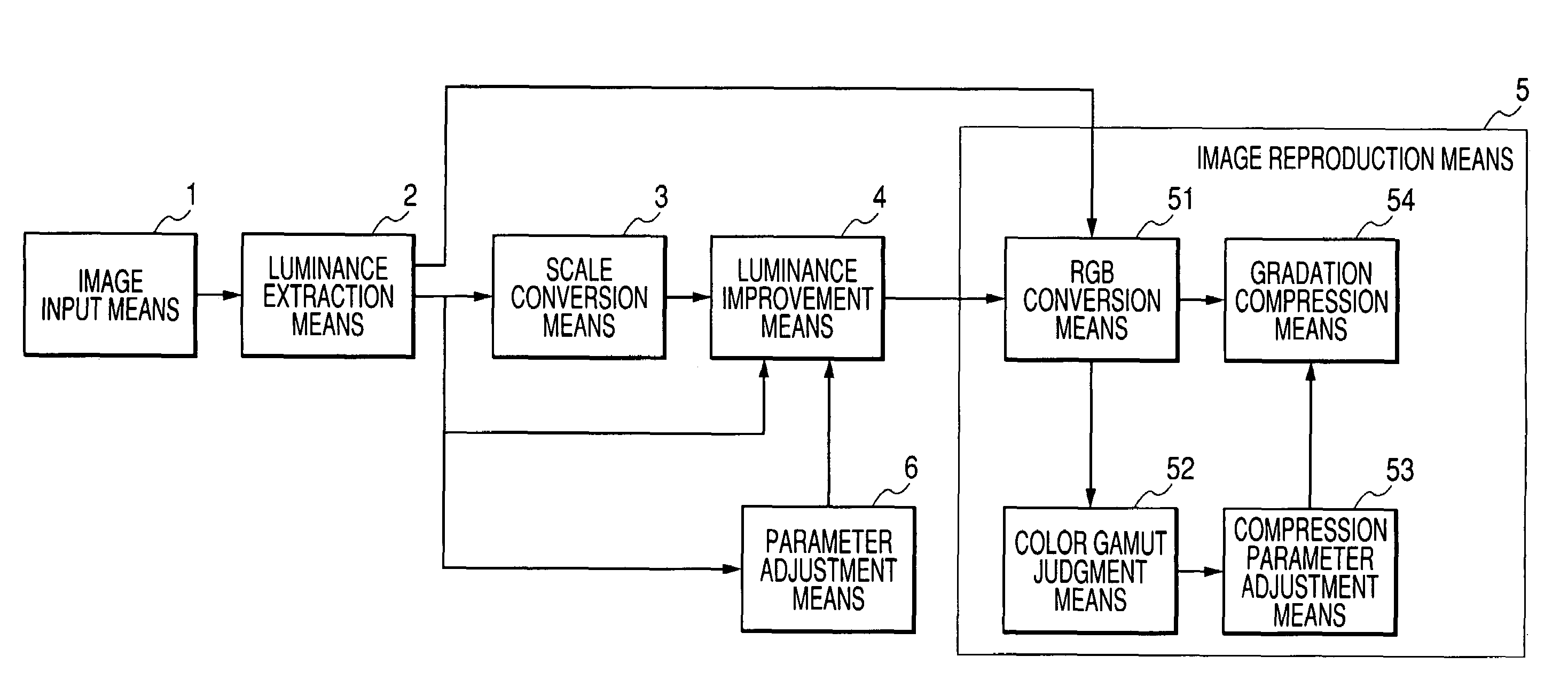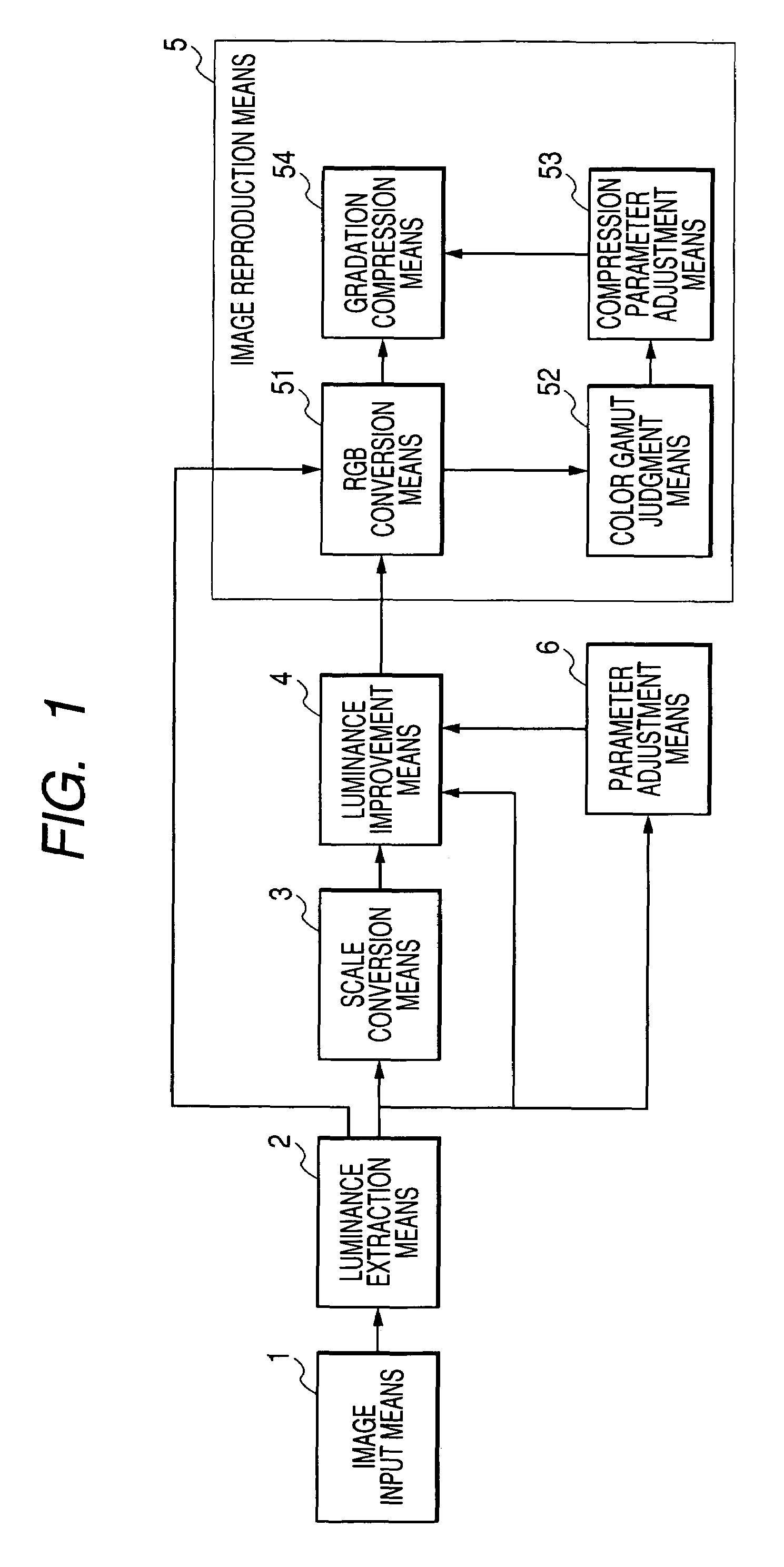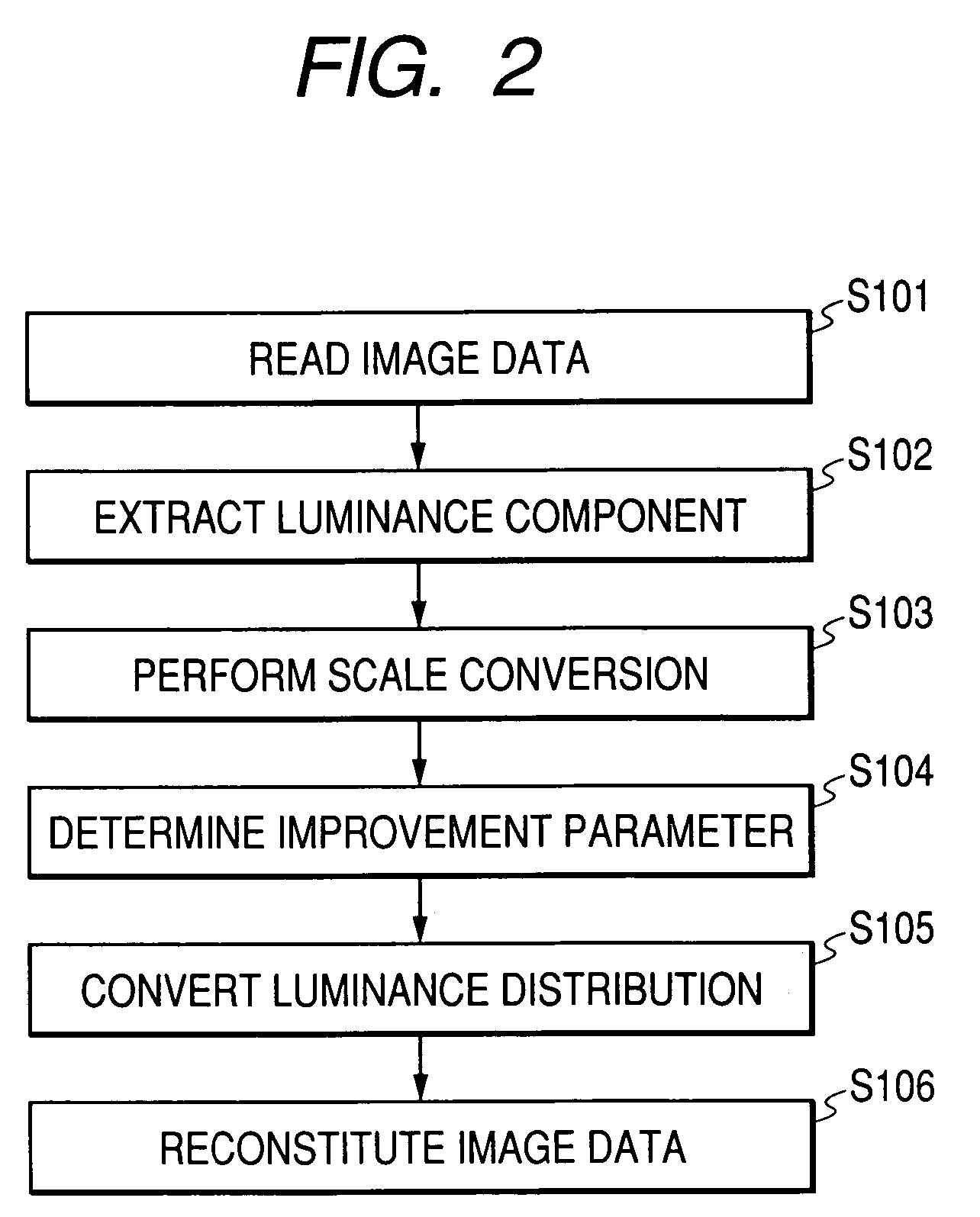Image processing method and apparatus
a technology of image processing and image, applied in the field of image processing methods and apparatuses, can solve the problems of troublesome user's exposure correction operation, difficult to appropriately determine the brightness of the image, and excessive brightness of the background portion of the main subject, so as to prevent the occurrence of gradation jump or color displacement, and improve the brightness distribution of the digital image to be processed
- Summary
- Abstract
- Description
- Claims
- Application Information
AI Technical Summary
Benefits of technology
Problems solved by technology
Method used
Image
Examples
first embodiment
[0026]FIG. 1 shows the structure of an image processing system according to the present embodiment.
[0027]In FIG. 1, reference numeral 1 denotes an image input means for inputting digital image data (hereinafter, called image data) into the image processing system. For example, such the input means is constituted in a digital camera, a scanner or the like.
[0028]Reference numeral 2 denotes a luminance extraction means for extracting luminance components and color components from the image data which was input by the image input means 1. Reference numeral 3 denotes a scale conversion means for obtaining the distribution, on a relative large scale, of the luminance component of the image data which was output from the luminance extraction means 2. Reference numeral 4 denotes a luminance improvement means for improving the distribution of the luminance component of the image data by use of the luminance component of the image data which was output from the luminance extraction means 2 an...
second embodiment
[0083]FIG. 4 shows the structure of an image processing system according to the second embodiment. The same structures as those in the first embodiment are respectively denoted by the corresponding reference numerals same as those in the first embodiment, and the description thereof will be omitted.
[0084]In the first embodiment, in the case where the luminance improved result exceeds the color gamut, the gradation is compressed for the luminance improved result. On one hand, in the present embodiment, a parameter used in improving the luminance is changed, and the luminance is improved again.
[0085]In FIG. 4, reference numeral 5 denotes an image reproduction means for reconstituting image data by synthesizing the improved luminance component which was output from a luminance improvement means 4 with the color component which was output from a luminance extraction means 2. The image reproduction means 5 is composed of an RGB conversion means 51, a saturation judgment means 21 and an e...
third embodiment
[0096]FIG. 6 shows the structure of an image processing system according to the present embodiment.
[0097]In FIG. 6, reference numeral 1 denotes an image input means for inputting digital image data (hereinafter, called image data) into the image processing system. For example, such the input means is constituted in a digital camera, a scanner or the like.
[0098]Reference numeral 2 denotes a luminance extraction means for extracting luminance components and color components from the image data which was input by the image input means 1. Reference numeral 3 denotes a scale conversion means for obtaining the distribution, on a relative large scale, of the luminance component of the image data which was output from the luminance extraction means 2. Reference numeral 4 denotes a luminance improvement means for improving the distribution of the luminance component of the image data by using the luminance component of the image data which was output from the luminance extraction means 2 and...
PUM
 Login to View More
Login to View More Abstract
Description
Claims
Application Information
 Login to View More
Login to View More - R&D
- Intellectual Property
- Life Sciences
- Materials
- Tech Scout
- Unparalleled Data Quality
- Higher Quality Content
- 60% Fewer Hallucinations
Browse by: Latest US Patents, China's latest patents, Technical Efficacy Thesaurus, Application Domain, Technology Topic, Popular Technical Reports.
© 2025 PatSnap. All rights reserved.Legal|Privacy policy|Modern Slavery Act Transparency Statement|Sitemap|About US| Contact US: help@patsnap.com



